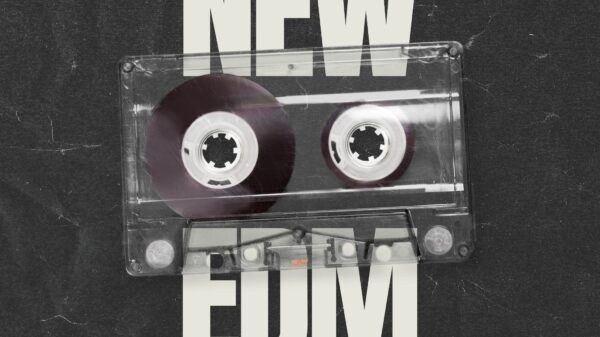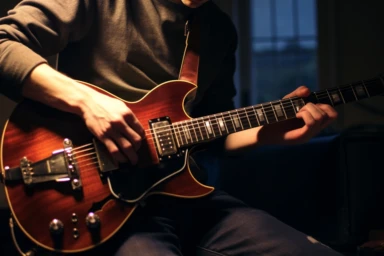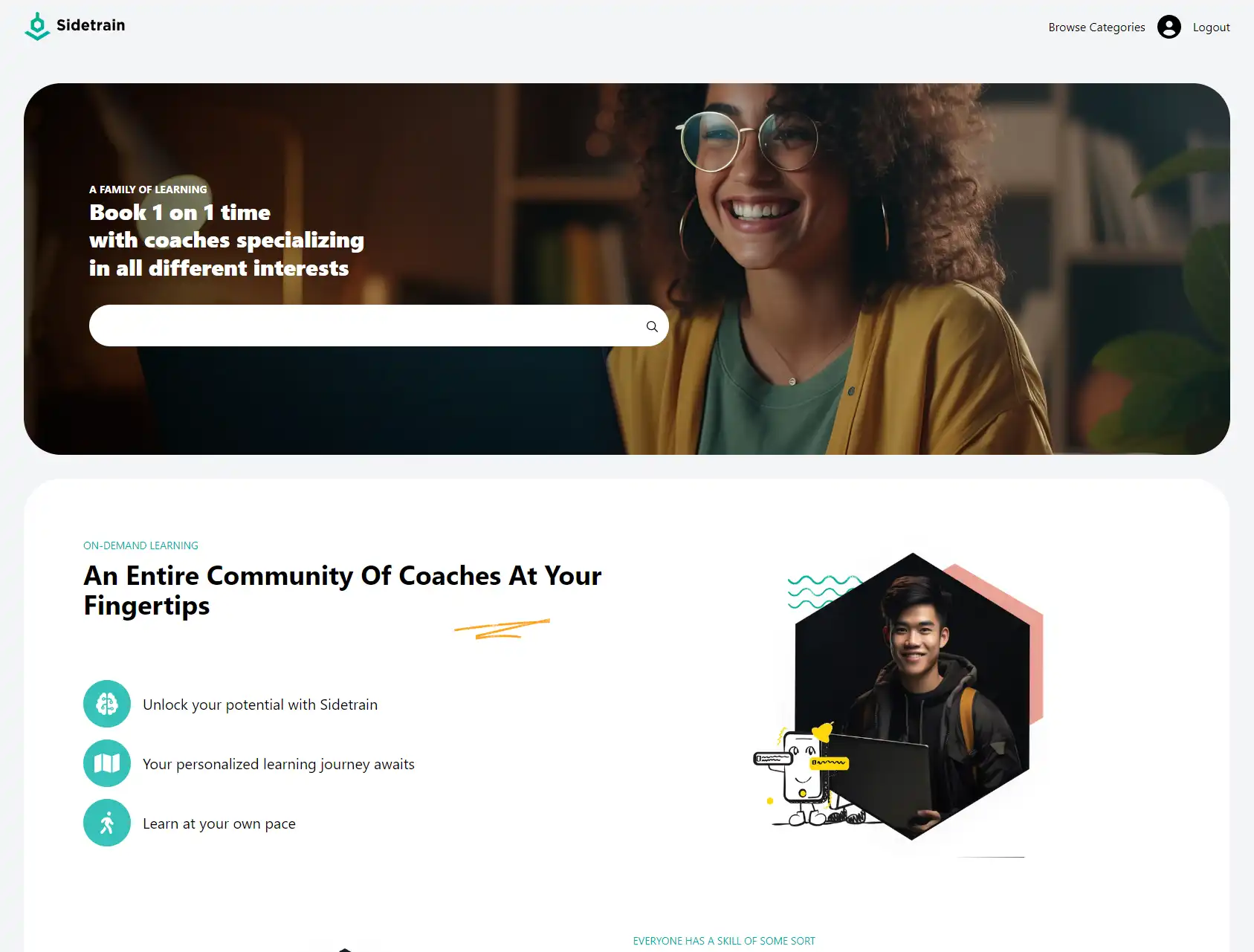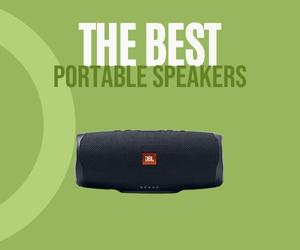Learning to play the guitar can provide immense personal enjoyment and fulfillment. With so many legendary guitarists to look up to, from Jimi Hendrix to Eddie Van Halen, Eric Clapton to Tom Morello, the guitar has an appeal like no other instrument. This guide will teach you everything you need to know as a total beginner, from buying your first guitar to mastering chords and songs. Let's get started on your guitar journey!
 Getting Started with Guitar
Getting Started with Guitar
Before you can start wailing away on guitar, you need to learn the basics. Here are some things to know as a beginner:
Types of Guitars
There are two main categories of guitars:
Acoustic – Uses a hollow wood body to amplify and project the sound. You can play acoustic guitars unplugged or plug into an amp. Great for folk, country, bluegrass and unadorned styles.
Electric – Requires an amplifier to produce sound but allows for almost unlimited sound modification through effects pedals. Used for rock, blues, metal, jazz fusion, and more.
You can also get acoustic-electric guitars that have pickups to amplify the acoustic sound or run through effects. Good versatile starter option.
Guitar Parts
Here are the main elements of acoustic and electric guitars:
- Headstock – Top portion where strings are tightened and tuning keys are mounted.
- Tuners/Machine Heads – Geared mechanisms used to tune string tension/pitch.
- Nut – Plastic or bone strip where strings pass from fretboard to headstock. Helps align string spacing.
- Neck – Long portion that frets are embedded in. Determines scale length.
- Fretboard – Usually rosewood or maple. Has metal frets strings press against to change pitch.
- Body – Hollow chamber that amplifies the strings’ vibration. Made of various tonewoods.
- Sound Hole – Opening in body projecting acoustic sound. Electric guitars have solid bodies.
- Pickups – On electric guitars, these electromagnetic coils pick up string vibrations and convert to electric signal.
- Bridge – Anchor point securing strings at bottom of guitar. Transfers vibration to body.
- Saddles – Part of bridge each string rests on that sets string height.
- Pickguard – Plastic plate protecting body finish from pick scratches.
How to Tune a Guitar
- Use a digital tuner or tuner app to get accurate pitch. Clip-on tuners attach to headstock.
- Play each string individually and turn tuning keys to match the displayed tuning tone.
- Tuning order is E-A-D-G-B-E. Tune lowest E string first.
- Wind keys right to increase string tension/pitch. Turn left to flatten pitch.
- Check tuning periodically as you play. Strings may slip out of tune.
Proper tuning is essential for good tone and ease of playing. Always tune up before practicing!
Learning Guitar Basics
Now that you understand the various elements of guitars, let’s go over some key skills every guitarist needs to learn:
How to Hold a Guitar
- Use a strap for standing or sit with guitar on right thigh. Keep back straight.
- Fretting hand: Curve fingers just behind frets. Keep thumb behind neck to counterpressure.
- Picking hand: Anchor pinky edge on bridge. Keep wrist straight.
Proper posture and hand positioning prevents injury and allows free motion.
Basic Hand Technique
Fretting hand:
- Use fingertips to press strings down just behind fret. Press straight down, not at an angle.
- Keep fingers close to frets and use minimal pressure needed to ring clearly.
- Use one finger per fret max. Shift position rather than stretching fingers.
Picking hand:
- Hold pick between thumb and index finger.
- Keep wrist relaxed and loose. Move from the elbow and shoulder, not just wrist.
- Alternate down and up picking motions smoothly.
Develop these fundamentals first before playing full chords and songs.
How to Read Guitar Tablature
While learning to read standard notation is valuable too, most guitarists use tablature (aka tab) which shows frets and strings to play:
- Horizontal lines represent strings, top to bottom E-A-D-G-B-E.
- Numbers on lines indicate which fret to press strings down on.
- Play highest to lowest tab lines simultaneously to form chords.
- Rhythm notation shows beat duration like quarter, eighth notes.
Tabs are more intuitive for visualizing guitar parts than reading notes on a staff. Most guitar sheet music includes both tab and standard notation.
Playing Single Notes
- Use fretting hand fingers to press strings down behind appropriate frets indicated by tab.
- Pick the string with the picking hand. Alternate down and up strokes smoothly.
- Let notes ring out fully before picking the next note. Don’t cut off sustain.
- Gradually increase speed using a metronome after you can cleanly play at slower tempos.
Playing melodies develops coordination, accuracy, and muscle memory in both hands.
Common Guitar Chords for Beginners
Once comfortable playing individual notes, you can start learning some basic open chords. Get these down and thousands of songs open up to you!
E Major
- Fret: 022100
- Simple three-finger major chord
- Used in tons of rock and pop songs
A Major
- Fret: X02220
- Utilize open A string as bass note
- Very versatile for different genres
D Major
- Fret: XX0232
- Strum all strings
- Strong open chord fitting for rock and country
C Major
- Fret: X32010
- Movable major chord shape. Good bar chord practice.
- The most common guitar chord
G Major
- Fret: 320003
- Highest 3 strings held down
- Bright and lively sounding chord
E Minor
- Fret: 022000
- Minor version of E chord
- Much used in blues and rock
Learn these open chords well with both fretting and strumming hands. Get comfortable changing between them fluidly.
Guitar Scales for Beginners
Scales are successions of notes comprising a key. Learning scales helps you master the fretboard, play melodies, and understand music theory. Here are two basic guitar scales to start with:
Pentatonic Minor Scale
Very commonly used in rock, pop, country and blues music. Has a classic guitar solo sound. Memorize this pattern:
- Fret: 8-10-8-7-8-10
- Can move this shape up the neck.
- Focus on accurate picking and smooth transitions between the notes.
Major Scale
The foundation of Western music. Practicing helps develop dexterity and music theory knowledge:
- Fret: 3-2-1-2-2-3-1 (frets on adjacent strings)
- Start with one octave pattern in the key of C.
- Add metronome and gradually increase speed. Listen closely for clear notes.
Drilling scales aids muscle memory and familiarity with the fretboard. They also loosen up your fingers and warming up before playing.
Easy Guitar Songs for Beginners
Here are some simple, common songs recommendations to help build your guitar skills:
Seven Nation Army – The White Stripes
- Mainly uses E and D power chords
- Super catchy guitar riff perfect for beginners
- Helps practice basic strumming
Wish You Were Here – Pink Floyd
- Chord progression uses Em, G, D, A and C
- Focus on chord changes and strumming
- Melancholy classic ballad
House of the Rising Sun – The Animals
- Arpeggiates Am, C, D, F and E chords
- Loose picking hand motion
- Blues staple uses pentatonic scale
Come As You Are – Nirvana
- Alternates Em and D chords
- Easy yet cool riff repeats throughout song
- Familiar rock tune ideal for practice
Hey There Delilah – Plain White T's
- Romantic chord progression with Em, C, D, and G
- Muted strumming creates light percussion
- Simple and repetitive
Look up free tab and chord charts online for these songs and more. Learn at a slow tempo first.
Advancing Your Guitar Skills
Once you have the basics down, here are some intermediate skills to start developing:
Power Chords
- Used in rock and metal to form simple, heavy riffs.
- Contain root and fifth only, no third. Example is E5 power chord: 077xxx
- Movable shape lets you play up the fretboard easily.
- Palm mute chords to chug away rhythms.
Barre Chords
- Make a “bar” with index finger across multiple strings and fret.
- Enables movable major, minor, seventh chords.
- Essential for guitar flexibility but requires finger strength.
- Start with major shapes like F barre chord.
Fingerpicking
- Pluck strings with fingertips and thumb nimbly.
- Lets you play melody and accompaniment simultaneously.
- Alternate bass notes on low strings with higher melody.
- Develops coordination and dexterity.
Take on these challenges slowly. Be proud of small daily improvements. Advanced techniques require time and patience.
How to Read Guitar Sheet Music and Tab
While tabs show you what frets to play, standard notation communicates rhythm, articulation, dynamics and more. Learn to read both:
Standard notation:
- Notes placed on five staff lines and four spaces represent pitches.
- Note values indicate length – whole, half, quarter, eighth etc.
- Stems up or down specify which hand plays notes.
- Key signature indicates chord tones and scales.
- Symbols convey tempo, dynamics, technique and style.
Tab:
- Six horizontal lines represent your guitar strings.
- Numbers on lines tell you the fret to play each note.
- Rhythm notation shows when to play notes.
- Can visually follow tabs easier than reading notes.
Practice reading simple sheet music and matching it to what you play. Combine your understanding of notation and tab to unlock songs.
How to Improvise Guitar Solos
Learning to improvise guitar solos helps develop creativity and theory. Follow these tips:
- Pick a simple chord progression to solo over like I-IV-V-I in A major.
- Outline chord tones (A, D, E) during measures where those chords occur.
- Use notes from the A major pentatonic minor scale between chord tones.
- Start slowly and let long notes sustain to emphasize phrasing.
- As confidence grows, incorporate more notes, string bending, vibrato and dynamics.
- Respond and interact with the rhythm and feel rather than mechanically running through scales.
- Let mistakes happen! Improv is about creative expression, not perfection.
Improvising takes patience and practice. Noodle often to translate guitar theory into spontaneous music-making.
Buying Your First Guitar
Use this beginner's guide when buying your first guitar:
- Budget – How much can you spend reasonably? Student guitars under $300 work fine.
- Type – Acoustic, electric, or acoustic-electric? Consider what genres and sounds appeal to you.
- Body style – Jumbo, dreadnought, concert, parlor etc. for acoustics. Solid-body, semi-hollow etc. for electrics.
- Size – Full size, 3/4 size etc. Measure arm length if unsure what size fits you best.
- Condition – Look for free of cracks, bowing and warping on used models. Test electronics function.
- Neck – Make sure it sits comfortably in hand. Acoustic fretboards usually wider.
- Sound/tone – Bright, warm, bassy etc.? Play to determine if you like how it sounds.
- Intonation – Test up the neck that notes ring true, not sharp or flat.
- Action – String height above frets. Buzzing or very hard to push means too low/high action.
Don’t overlook used and budget guitars. The instrument itself doesn’t determine skill level. Focus on playability and tone.
Guitar Maintenance and Care
Caring for your guitar will keep it sounding its best:
- Change strings regularly – Replace rusty, old strings with fresh sets monthly. Keep extra sets handy.
- Check neck relief – Sight the neck curve for just a slight upwards bow. Adjust truss rod if needed.
- Clean fretboard – Polish rosewood or maple with lemon oil. Avoid water accumulation.
- Wipe down after playing – Clean strings, neck and body with a microfiber cloth to prevent grime buildup.
- Avoid temperature extremes – Don’t leave guitars in hot cars or freezing weather to prevent damage.
- Loosen/remove strings when storing – This eliminates tension straining the neck when not playing for prolonged periods.
- Humidify – Use room or guitar case humidifiers during dry seasons to prevent cracking.
- Inspect electronics – Check cables, pots and connections on electrics to address any crackling issues promptly.
A well-maintained guitar stays structurally sound and intonates accurately. Love your guitar and it will love you back!
Guitar Theory Basics
Understanding some fundamental music theory will make guitar playing more intuitive rather than just memorizing patterns:
Notes and Scales
- Notes labeled A-G repeat up strings in set intervals based on the major scale.
- Master major, minor, pentatonic and blues scales in various keys and positions to unlock soloing.
- Know the notes contained in scales to visualize patterns better.
Chords and Harmony
- Triads (major, minor etc) are built from the root, third and fifth scale degrees.
- Common chord progressions provide the foundation of songs. I-IV-V and ii-V-I are most popular.
- Recognize chord qualities like majors, minors and sevenths by sight and sound.
Reading Music
- Standard notation communicates notes, rhythm, articulation, dynamics etc on the staff.
- Tablature uses numbers to show frets and is more guitar-specific.
- Learn to read both formats to access charts for songs you want to play.
Take it step-by-step. A little music theory knowledge goes a long way on guitar.
How to Practice Guitar Effectively
Progress requires proper practice habits:
- Set goals – Have specific skills in mind to work on rather than mindlessly playing.
- Warm up – Stretch hands, do finger exercises, run scales to limber up.
- Use metronome – Keep steady time, gradually increase speed with control.
- Perfect parts slowly – Isolate tricky sections, repeat with focus.
- Play along – Use backing tracks, lesson videos to apply skills musically.
- Take breaks – Let hands rest occasionally to avoid fatigue and injury.
- Have fun – Maintain interest by playing songs you love, jamming to backings tracks etc.
- Record yourself – Identify areas to improve and track your progress.
- Twenty minutes daily – Multiple short practices are better than marathon sessions.
Be patient on yourself. Small improvements add up over consistent practice to make real gains.
Common Guitar Playing Problems and Fixes
Here are some frequent guitar struggles beginners encounter along with troubleshooting tips:
Problem: Fretting hand fingers buzz and mute strings unintentionally
Fix: Curve fingers more, use only needed pressure, adjust thumb position
Problem: Strumming rhythm sounds uneven/inconsistent
Fix: Use metronome, subdivide beats, listen to song vocals for timing
Problem: Notes don’t sustain, sound muted
Fix: Check action height, don’t cut off ring time, allow vibrato to bloom
Problem: Hand or wrist pain/soreness during play
Fix: Take breaks, stretch, check posture and hand positions, alternate picking direction
Problem: Difficulty pressing strings down to frets
Fix: Lower action, build fretting hand strength and calluses safely over time
Problem: Musical parts sound stiff, robotic
Fix: Focus on playing smoothly and loosely, add personal style and phrasing
Problem: Chord changes sound abrupt, choppy
Fix: Transition between chords using guide fingers, keep unused fingers close to frets
Identify your specific struggles and address them. Seek help from a teacher if needed. You’ve got this!
Gear for Beginner Guitar Players
Beyond a guitar itself, beginners need a few basic gear items:
- Tuner – Clip-on or pedal tuner to keep guitar sounding right
- Picks – Try different thicknesses to find what suits your playing style
- Strap – Essential for playing standing up with proper position
- Extra strings – Stock up on replacement string sets for fresh tone
- Gig bag/case – Protect your guitar when not playing
- Cable – 10-20 foot instrument cable for electric guitars
- Stand – Displays guitar and keeps it accessible for practice
- Capo – Clamps down across all strings to quickly change key
- Guitar support – Cushions guitar in lap for better ergonomics
- Slide – Adds lap steel guitar sounds, good for blues playing
- Pedal tuner – For quick on-stage tuning if no guitar tech
- Metronome – Develop steady rhythm and timing
- Music stand – Holds charts so you can play while seated
- Humidifier – For acoustic guitars to prevent wood drying/cracking
- String winder – Allows faster restringing
- Electronic tuner – For accurate tuning, can mute signal to audience
- Recording interface – Plug into computer to record yourself playing
- Effect pedals – Distortion, reverb, delay etc. pedals for electric guitar tones
- Footstool – Elevates foot for optimal acoustic guitar body angle
I'd prioritize a tuner, extra strings, gig bag/case, stand, capo, footstool, and slide as essentials. Build up from there as you progress and discover what gear benefits your playing style. Focus on fundamentals before advanced equipment. Most importantly, keep guitar time fun!
Learning Guitar with Online Lessons
Thanks to online guitar lessons, you can learn to play guitar from top instructors from the comfort of home. Here are some great online guitar learning platforms:
Fender Play
- Step-by-step video lessons from beginner to advanced
- Massive song library with full tutorials
- Great for acoustic, electric, bass
- Structured core learning programs
- 7-day free trial, then $9.99/month
Guitar Tricks
- Over 11,000 video guitar lessons
- Track progress and create a study plan
- All styles – blues, rock, country, classical
- $19.99 monthly membership
Lessonface
- Live online guitar lessons via video chat
- Customize curriculum with qualified teachers
- Convenient scheduling, take anywhere
- Packages from $149/month
JustinGuitar
- Hundreds of free YouTube video lessons
- Focus on beginner foundations
- Also covers theory, techniques, songs
- Upbeat teacher, simple explanations
The abundance of guitar content online allows you to find the instruction style and format that fits your needs perfectly to make learning guitar accessible and enjoyable.
Learning Guitar Online with Udemy
With over 720,000 students enrolled, Udemy is a leading marketplace for online guitar lessons. Here's what you can expect learning guitar through Udemy:
Huge course library – Choose from thousands of guitar lessons covering techniques, theory, songs, genres, equipment and more. Filter courses by skill level, rating, and price point.
Structured learning – Lessons are organized into comprehensive courses that take you from beginner fundamentals through advanced playing in a step-by-step progression.
Video tutorials – Most courses consist of pre-recorded HD video lessons that you can watch and rewatch on-demand to reinforce concepts. Some also include pdf materials.
Feedback options – Depending on the course, you may be able to submit practice videos or assignments to instructors for personalized feedback and coaching.
Supplementary resources – Many classes provide backing tracks, tablature, charts, apps and other helpful resources to supplement video lessons.
Affordability – Individual classes are priced affordably, usually between $10-$100 total. Udemy also runs specials and discounts frequently.
Overall, Udemy gives you structured, comprehensive guitar instruction from the comfort of home. With an extensive course library and sales, you can learn guitar online affordably through Udemy.
Learning Guitar with Sidetrain
Connect with experienced professionals, receive personalized feedback, and improve your music production skills.
Sidetrain takes a personalized approach to online guitar lessons through their one-on-one live platform. Here's what makes Sidetrain unique for guitar learning:
Real time lessons – Lessons happen over video chat so you can ask questions and get instant feedback. You build a relationship with your regular teacher.
Customized curriculum – Teachers assess your abilities to tailor lessons to your exact skill level and musical interests. The curriculum revolves around you.
Convenient scheduling – Book lessons at times that fit your schedule. No need to conform to a rigid group class schedule.
Ongoing feedback – Submitting practice videos between lessons lets teachers spot areas for improvement early and adjust their teaching strategies.
Accountability – Consistent lessons with a dedicated teacher keeps you accountable to practice and achieve your guitar goals.
Flexibility – Take lessons anywhere you want with just a computer, tablet or phone. No commuting to a studio.
Affordability – Packages start at $20 per 30-minute lesson if you purchase multiple upfront. Single sessions also available.
For a personalized guitar learning experience tailored just for you, consider one-on-one online lessons with Sidetrain's global platform connecting you to amazing teachers worldwide.
Conclusion
Learning to play guitar is extremely rewarding, but requires patience and regular practice. Follow this beginner's guide for tips on guitar fundamentals, chords, techniques, theory and more. And tap into online guitar lessons to supplement your learning. With consistent dedication to daily guitar practice, you'll be playing songs proficiently sooner than you think. Now get out there and make some music!
FAQ: Learning to Play Guitar
Here are answers to some frequently asked questions about learning to play guitar:
How long does it take to learn guitar as a beginner?
Expect it to take about a year of regular practice to get comfortable with basic chords, strumming, and playing simple songs as a beginner. Building advanced techniques takes additional years. Be patient and focus on daily improvement.
What is the best age to start learning guitar?
You can begin learning guitar at any age! Many kids start around ages 8-14 to take advantage of developing dexterity and music absorbing abilities. But plenty of adults successfully learn guitar later in life too. It's never too late to try.
What are the easiest guitar chords for beginners to learn?
Some of the easiest beginner guitar chords include E major, A major, G major, C major, D major, Em, and Am. Learn basic open chords before advancing to barre chords. Master transitions between chords fluidly.
What is the best guitar for beginners?
Good beginner guitar choices include the Yamaha FG800, Fender FA-115 Acoustic, Epiphone DR-100 Acoustic, Squier Bullet Strat, and Epiphone Les Paul Electric. Go for a playable, attractive looking guitar from a reputable brand.
How often should a beginner practice guitar to see progress?
Aim for 15-30 minutes of daily guitar practice as an optimal amount. Short frequent sessions are more effective than cramming for hours once a week. Establish a regular practice schedule and stick to it.
Should I take guitar lessons or teach myself as a beginner?
Taking lessons from a skilled teacher provides guidance and accountability. But online guitar lessons are an affordable alternative, letting you learn at your own pace. Try out self-instruction first before committing to traditional lessons.
What should I look for when buying a beginner acoustic guitar?
The top considerations are playability, solid construction, tonewood material, and appealing looks/finish in your budget range. Visit a music store to test guitars in person. Buy from a reputable brand. Focus on sound and feel more than flashy looks.
I hope these guitar beginner tips help set you up for success. Let me know if you have any other questions!










 Getting Started with Guitar
Getting Started with Guitar







